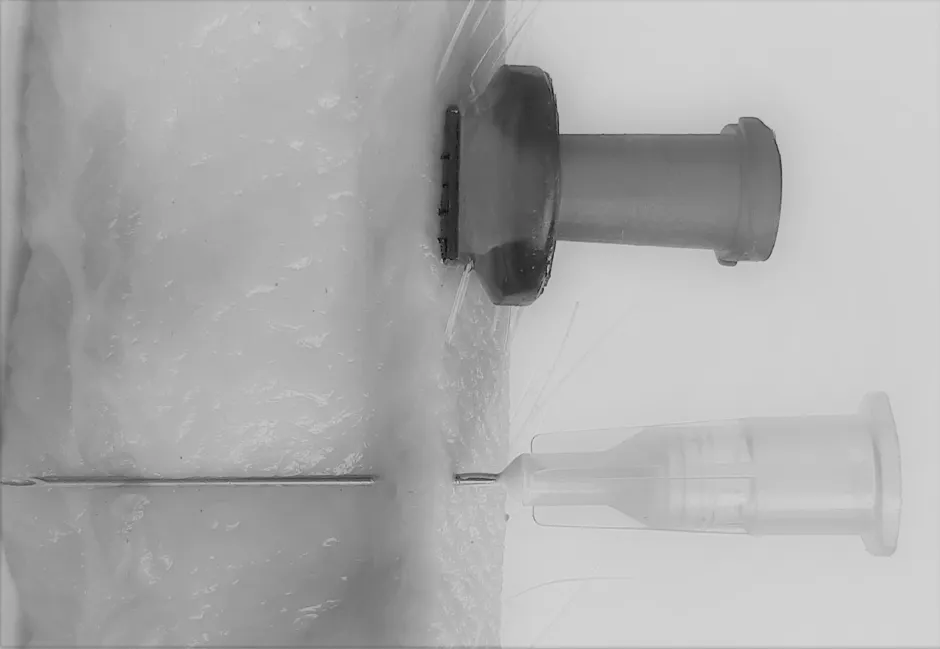The world’s first coronavirus vaccine “smart patch” is being developed in Wales, researchers have said.
The device, which works like a nicotine patch, is designed to allow patients to self-administer the vaccine before being able to monitor their body’s response to it.
The small patch will use tiny microneedles, measured in millionths of a metre, to break the skin barrier of a patient and deliver the vaccine in a less invasive way than a traditional hypodermic needle.
The device simultaneously measures a patient’s inflammatory response to the vaccination by monitoring biomarkers in the skin while being held in place on their arm with tape or a strap.
The real-time measuring of the vaccine’s effectiveness is hoped to speed up the containment of future COVID-19 outbreaks.
Read the latest coronavirus news:
- Everything you need to know about long COVID
- Michael Mosley: Why the coronavirus vaccine will save your 2021
Researchers at Swansea University say the devices would be easy to distribute and low-cost to manufacture, with scope to expand the work to apply to other infectious diseases in the future.
A prototype will be developed by the end of March with the aim of having it put forward for clinical trials and made commercially available within three years.
Project lead Dr Sanjiv Sharma said the quick measuring of the vaccines’ effectiveness “will address an unmet clinical need and would provide an innovative approach to vaccine development”.

“The real-time nature of the platform will mean rapid results allowing faster containment of the COVID-19 virus," said Sharma. "This low-cost vaccine administration device will ensure a safe return to work and management of subsequent COVID-19 outbreak waves.
“Beyond the pandemic, the scope of this work could be expanded to apply to other infectious diseases as the nature of the platform allows for quick adaptation to different infectious diseases.
“We are currently getting the platform ready and we hope to do human clinical studies on transdermal delivery with our existing partners at Imperial College London, in preparation for final implementation.”
The project, titled Smart Vaccine Devices For Delivery Of COVID-19 Vaccination, is being funded by the Welsh Government and the European Union’s European Regional Development Fund.
Why does the vaccine have to be injected currently?
While some vaccines are administered through a nasal spray, coronavirus vaccines will initially be given through an injection in the arm. According to Dr Jeremy Rossman, lecturer in virology at the University of Kent, this is simply because such vaccines are faster to develop, test and manufacture.
Future coronavirus vaccines could be delivered through the nose, however. In fact, institutions such as Imperial College London have begun trials to assess the safety and effectiveness of several vaccines, including the Oxford/AstraZeneca one, via a nasal spray. And many scientists predict this could prove even more effective than an injection.
“There are certainly good arguments for delivering a vaccine’s payload directly to the upper respiratory tract, like modern flu vaccines,” says Dr David Matthews, a virologist from the University of Bristol.
“[A vaccine delivery via the nose] will raise an immune response at what’s called the mucosal surfaces – the surfaces of the nose, mouth and the back of the throat. That’s where you really want a strong and effective immune response if you’re going to beat off a respiratory virus. And, crucially, a nasal spray is going to require less training to administer.”
Read more:
